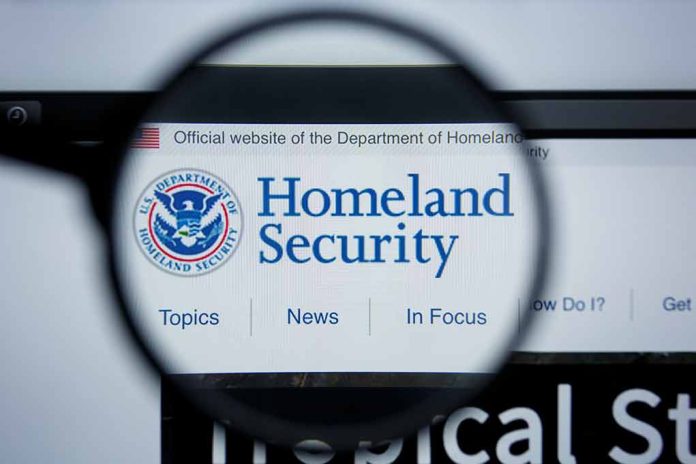
DHS warns that pro-Iranian hackers are poised to strike U.S. networks and critical infrastructure in response to President Trump’s recent airstrikes on Iran’s nuclear facilities, potentially creating unprecedented disruptions to American energy and financial systems.
Key Takeaways
- The Department of Homeland Security has issued a three-month terrorism advisory bulletin warning of a “heightened threat environment” following U.S. airstrikes on Iranian nuclear facilities
- Pro-Iranian hacktivists and government-affiliated cyber actors are likely to conduct attacks against U.S. networks, potentially targeting critical infrastructure, energy, and finance sectors
- Iran remains committed to targeting U.S. Government officials it holds responsible for the 2020 death of an Iranian military commander
- The risk of domestic violence could increase if Iranian leadership issues a religious ruling calling for retaliatory attacks
- Recent terrorist incidents motivated by anti-Semitic or anti-Israel sentiment raise concerns about further attacks amid the escalating Israel-Iran conflict
Iran Retribution Threats Prompt Nationwide Alert
The Department of Homeland Security issued an urgent bulletin Sunday warning Americans of heightened national security risks following President Trump’s decision to conduct airstrikes against Iranian nuclear facilities. The advisory, effective through September 22, 2025, comes as major U.S. cities have already begun increasing security measures around potential targets. The bulletin specifically cautions that Iranian-backed actors may seek retribution through various means, including cyberattacks and potential physical threats against American interests both domestically and abroad.
The DHS bulletin explicitly states that the current conflict has intensified the threat landscape within American borders. “The ongoing Iran conflict is causing a heightened threat environment in the United States. Low-level cyberattacks against U.S. networks by pro-Iranian hacktivists are likely, and cyber actors affiliated with the Iranian government may conduct attacks against U.S. networks,” said the bulletin, according to the Washington Times.
Critical Infrastructure Vulnerabilities Under Spotlight
Cybersecurity experts have raised significant concerns about America’s preparedness for sophisticated Iranian digital attacks. These threats could target essential services and systems that average Americans depend on daily. Former White House Chief Information Officer Theresa Payton warned that Iranian cyber operatives might deliberately focus on sectors that would cause maximum disruption to American life. “Iran might first target energy and finance for maximum disruption — public pain points that cripple daily life,” said Theresa Payton, who served as White House chief information officer under former President George W. Bush, told The Washington Times.
“If You See Something, Say Something®,” stated DHS.
The bulletin also highlights Iran’s ongoing vendetta against specific American officials. “Iran also has a long-standing commitment to target U.S. Government officials it views as responsible for the death of an Iranian military commander killed in January 2020,” it says,” according to the Washington Times. This reference to the elimination of Iranian General Qassem Soleimani underscores the persistent nature of Iran’s grudges and willingness to pursue retribution even years after perceived slights, making the current situation particularly volatile.
Domestic Terrorism Concerns Heightened
The advisory raises particular alarm about the potential for domestic terrorism incidents fueled by the international conflict. Recent attacks within the United States have been motivated by anti-Semitic or anti-Israel sentiments, a trend that could worsen as tensions between Israel, Iran, and the United States escalate. Law enforcement agencies have already disrupted multiple Iranian-backed plots since 2020, demonstrating the persistent threat posed by Tehran’s agents operating within American borders.
The DHS bulletin specifically notes that violence could intensify if Iranian religious leaders issue formal calls for attacks against American targets. This mechanism has historically been effective in mobilizing extremists worldwide. Additionally, foreign terrorist organizations have been increasingly vocal in calling for violence against U.S. assets and personnel in the Middle East, creating a multilayered threat environment that stretches from America’s heartland to its overseas interests.
Protective Measures and Public Vigilance
In response to these elevated threats, DHS has urged Americans to adopt heightened security awareness and report suspicious activities immediately. The Cybersecurity and Infrastructure Security Agency (CISA) has published comprehensive cybersecurity best practices for both individuals and organizations to fortify their digital defenses. The Nationwide Suspicious Activity Reporting Initiative provides a structured framework for identifying and reporting potential terrorism threats before they materialize into actual attacks.
The advisory serves as a stark reminder that international conflicts have direct implications for domestic security. As President Trump continues to address Iranian nuclear ambitions with decisive military action, American citizens are being called upon to participate in national defense through increased vigilance and prompt reporting of unusual activities. The coming months will test America’s cyber resilience and physical security systems as Iranian actors potentially seek retribution through both traditional and asymmetric warfare tactics.





